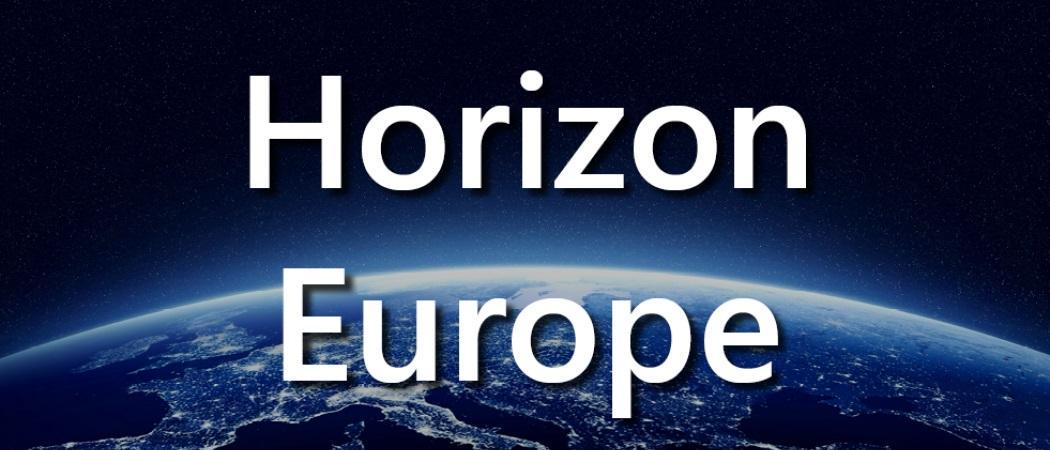New reports offer the first detailed look at climate, cancer, ocean, soil and cities missions

The European Commission on Thursday revealed initial details on the scope of five planned research missions that will launch as part of the next big EU R&D programme Horizon Europe.
Experts making up the mission boards have presented an array of research avenues and deadlines – described as preliminary – that they say would allow Europe to make headway on the giant challenges of climate change, cancer, adapting cities to global warming, protecting oceans and soil health.
The motive for the new, mission-led approach is to get buzz and momentum behind intractable problems. Former EU Research Commissioner Carlos Moedas, who introduced the concept, described missions as “something that will make people on the street talk about science.”
The shape and size of missions has been under debate for at least two years, with members of the European Parliament warning that modest spending will not spur big changes. There’s no budget finalised for the missions as yet, which have at different times been talked about as needing between €5 and €10 billion in total.
The mission boards – advisory teams comprising 15 experts and a chair – will hand over their final recommendations to the commission in September, with missions due to launch in 2021.
Here’s their overview of what the missions should aim to achieve.
Conquering cancer
The cancer mission sets outs recommendations for how to advance cancer research and ultimately “conquer” the disease, by addressing the “whole cancer control continuum”, from prevention of risk factors to survivorship support and end-of-life care, for all ages and cancers, including rare and poorly understood cancers.
The ultimate goal is that, “By 2030, more than three million lives [are] saved, [with survivors] living longer and better.”
To get there, the cancer mission board puts forward 13 steps. First, it wants to establish “a joint European platform for cancer research”, which would integrate innovative models and technology with existing data for investigating interactions of cancers and their hosts.
Second, the report proposes to launch an EU-wide research programme to identify genetic risk factors.
When it comes to cancer detection, the report proposes establishing research programmes for “optimising existing screening methods” and developing new early detection approaches.
Another research programme will work on the development of early detection systems and minimally invasive treatments.
To improve the lives of cancer patients and survivors, a fourth research programme will aim to understand the needs of all groups of people exposed to cancer and use it to enhance their quality of life. Here, the commission also hopes to launch a “virtual network”, where patients will share their data in return for information on treatment, follow-up recommendations and a long-term personalised care plan. The data collected on the platform would be made available for research purposes.
There are also plans for advancing and increasing the uptake of personalised medicine, overcoming inequalities in cancer treatment across Europe, raising awareness about cancer, and giving a special focus to childhood cancer.
The COVID-19 pandemic adds urgency to the cancer mission, the report argues. “The impact of the COVID-19 crisis has been immediate and dramatic, illustrated by a 25 per cent drop in cancer diagnoses in the Netherlands, and a 50 per cent delay in treatments in the UK, suspended prevention and early detection programmes and halted research activity.”
The global response to the crisis is, in other ways, inspiring for the cancer mission. “We have seen an unprecedented willingness in technology adaptation, collaboration across sectors and borders, including extensive data sharing, genuine communication and alignment between healthcare and research, remarkably shortening the implementation of research findings and the ability to mobilise and allocate considerable funding resources at short notice,” the report says.
Soil mission
The most concisely drawn mission is the one promoting better soil health. The goal here is to, “Ensure that 75 per cent of soils are healthy by 2030 and are able to provide essential ecosystem services.”
The increasing demand on land for building, and excess use of fertiliser on farms, is wrecking the continent’s most fertile soils.
To rescue the situation, and “ensure no soil is left behind”, the mission board sets out four building blocks: a new soil-focused research and innovation programme, investment for a network of innovation laboratories in farms and forests, a “robust soil monitoring programme” in each member state, and “fostering citizen engagement with the issue”.
The first block, the research programme, should be “tailored to local needs” and aimed at transforming soil policy, management practices and production and land management across Europe.
The second block, a network of innovation labs, will allow land managers, public authorities and citizens to work with researchers to address soil health and knowledge gaps. The report proposes establishing five to 10 labs in each EU region, with up to 2,000 labs in total, to foster soil research across Europe.
“Generating three millimetres of top soil takes one century, so soils are a fragile, key non-renewable resource in our lifetime,” the report says.
Soil degradation can lead to a collapse of landscapes and ecosystems, increasing vulnerability to extreme weather events, risks to food security and even political instability.
Climate change exacerbates all of this and may result in food shortages by 2050 as many areas become “too hot and dry to produce food, while fertile soils along rivers and seas may be flooded due to sea level rise.”
Healthy soils in contrast are major carbon storehouses, essential for mitigating emissions from climate greenhouse gases: more carbon resides in soil than in the atmosphere and all plant life combined.
“A loss of only 0.1 per cent of carbon from degraded soils emitted into the atmosphere is equivalent to carbon emissions of 100 million extra cars on the road,” the report says.
Climate-resilient neighbourhoods
The climate mission’s stated objective is “to accelerate the transition to a resilient Europe, prepare the ground for deep-rooted system innovations, and equip regions and communities to jumpstart on their transition.”
The mission’s contribution to this will involve equipping 200 local administrative units and regions with access to “climate risk profiles and enhanced early warning systems” by 2030. Local councils will have adopted “comprehensive climate risk management plans”, and trialled “100 demonstrations of resilience” in this time, the report says.
“We need to ensure that Europe is swiftly prepared for disruptions caused by looming climate risks,” the report says.
A climate catastrophe is coming, unless the rate of global warming is slowed. “We cannot continue in this trajectory without the risk of unleashing unstoppable planetary forces with huge socio-economic consequences.”
The pandemic has showed “unambiguously” how important it is to act early upon warnings and in a coordinated way, the report says.
But the current crisis has also stunted the development of the mission, with the board forced to cancel engagement activities with the public in Belgium and Croatia.
100 carbon-neutral cities
The thrust of the cities mission is similar to the climate mission, but arguably less fuzzy.
The mission board here describes its goal as “supporting, promoting and showcasing” 100 European cities in their “systemic transformation towards climate neutrality by 2030”.
Cities cover about 3 per cent of the land on earth, yet produce about 72 per cent of all global greenhouse gas emissions, the report notes.
Reaching carbon neutrality in cities in 10 years, as opposed to the longer timeframe of 30 years set out in EU’s 2050 Green Deal push, is “a huge challenge”, the report recognises.
But the authors say the green investment trend is favourable. “Green technology prices and market conditions are moving in directions that favour climate-friendly investments and will continue to strengthen incentives to transition.”
A big component of the drive to create climate-neutral cities will involve training citizens to become “agents of change through bottom-up initiatives and innovation and through new forms of governance”, though the report offers little practical detail on what this will look like.
Protecting and restoring oceans
The goal of the oceans mission is a “full recovery and regeneration of European seas and freshwater ecosystems” by 2030.
To do this, it is proposed to take action in five areas: achieving zero ocean pollution, encouraging regeneration of habitats, decarbonising waters, making changes to governance, and educating Europeans about the oceans.
In the fight against pollution, the commission hopes to make the Mediterranean litter-free by 2025, and the rest of the European seas clean by 2030. Part of achieving this will be making all plastics in the EU reusable or recyclable in the next 10 years, among many other measures.
The second goal is to regenerate 20 per cent of all degraded marine habitats by 2030 using ecological engineering and green infrastructures. By 2030, at least 30 per cent of EU waters should be protected marine areas, where biodiversity is safeguarded from human interference, the report says.
When it comes to the decarbonisation of European waters, there are four prongs of attack. The first one is increasing the use of renewable energy, with at least 35 per cent of the EU’s energy mix covered by renewable ocean energy by 2030. The second goal is stopping fishing from altering the biodiversity of European waters by 2035.
The third aim is decreasing the impact of shipping, to be spelled out further in the EU’s Clean Shipping Strategy to be adopted by 2035. The last – and largely undefined – goal is to make marine tourism more sustainable, which will include renovating tourism infrastructures and promoting eco-tourism.
Under governance aims, the commission hopes to stop harmful fishing subsidies by 2030 and eliminate illegal fishing by 2030, while the main goal of citizen education is raising awareness and closing the ‘emotional gap’ in people’s relationship with water.
It is still largely unclear how the commission hopes to achieve these goals. Enhancing citizen education, encouraging research cooperation, and financing research and innovation are named as the drivers of change, however, the exact structures that will support the mission remain unclear in this interim overview.





 A unique international forum for public research organisations and companies to connect their external engagement with strategic interests around their R&D system.
A unique international forum for public research organisations and companies to connect their external engagement with strategic interests around their R&D system.